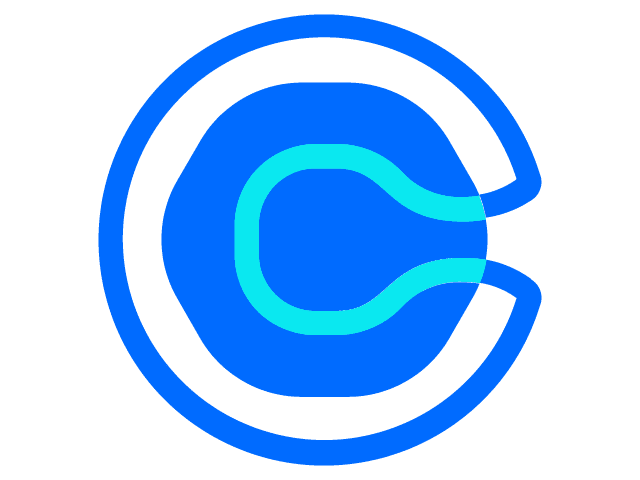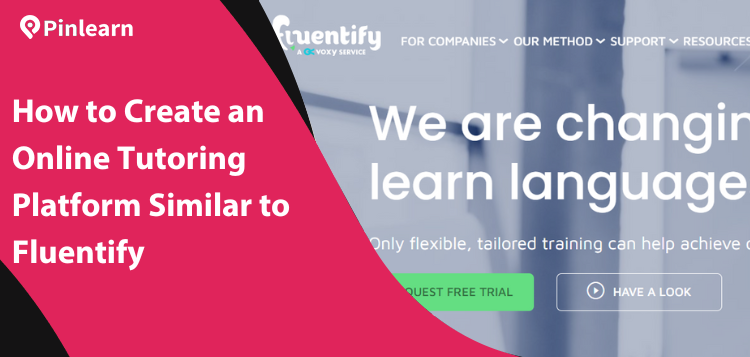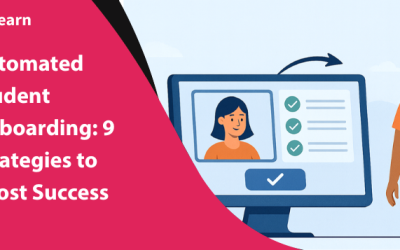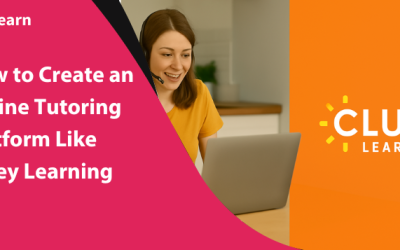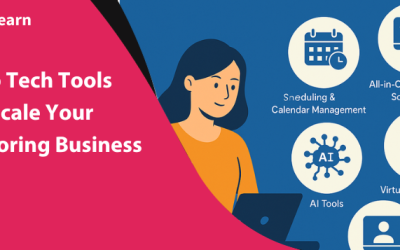How to Create an Online Tutoring Platform Similar to Fluentify?
Whether it’s Duolingo’s habit-forming streak challenges or Preply’s highly personalized learning, the language learning industry is currently having its moment. With a market estimate of $91.6 billion by 2030, it’s the right moment to step into the language learning space.
And Fluentify is a leading language tutoring platform transforming the growing space. It primarily focuses on professional & corporate programs offering customized learning paths.
Here’s a step-by-step guide on how to build a platform like Fluentify. In this blog, we’ll cover the following key developmental aspects:
- What is Fluentify? How Does it Work?
- Why build an online tutoring platform like Fluentify?
- 8 Steps to build a platform like Fluentify
- Related FAQs
So, let’s get started!
What is Fluentify? How Does it Work?
Fluentify is an online corporate language learning platform founded in 2013 and based in London. It caters to both individual and corporate language learners with its personalized language programs. Fluentify offers language lessons in English, Spanish, French, German, Italian and Portuguese.
From one-on-one personalised learning and academy modules to a blended learning approach, the platform is constantly bridging the learning gap. Voxy acquired Fluentify in March 2023 to offer a more comprehensive learning experience. The platform is on a mission to break the language barriers and offer learning opportunities across more languages.
How Does Fluentify Work?
Fluentify adopts a hybrid revenue model, earning from both commissions and subscription plans. You might already know its target audience includes both corporate clients and individual learners. Here’s a detailed breakdown of both audience segments:
For Individual Learners
- Pay-per-session – Earn commissions from 30-minute tutoring sessions booked on the platform
- Subscription plans – Offers packages or bulk lessons at discounted rates
- Academy – Includes customized career-focused, soft-skills-based, and foundational English courses
For Corporate Clients (Core business)
- One-on-one personalized plans – Provide 1-on-1 training sessions to corporate learners in their preferred subjects
- Training plans – Curate training programs based on the employee or team’s learning needs and goals
- Academy modules – Design academy modules on business communication, vocabulary, industry-specific or advanced communication
- Bulk subscription packages (volume-based pricing) – Offer language training packages based on a per-user or lesson basis
- Blended offerings – Provide a more blended learning approach with personalized tutoring and self-study academy modules
Why Build an Online Tutoring Platform Like Fluentify?
Here are the key reasons for creating a website like Fluentify:
-
Increasing Market Demand
The language tutoring market is expected to reach $91.6 billion by 2030. The growing internet penetration, mobile usage, AI and adaptive learning have contributed to the industry growth.
-
High Revenue Opportunity
Language tutoring platforms can earn from 1-on-1 live sessions, subscription packages, corporate partnerships, and more.
-
Scalable Business Model
Online tutoring platforms can start with private tutoring sessions, then include group sessions, packages, and memberships in their offerings.
-
Personalized Learning
Quick feedback and AI recommendations offer adaptive learning paths based on learners’ proficiency, strengths and preferences.
-
Trends & Technology Facilitating Growth
Adaptive learning, AI integration, and gamification further facilitate the growth and shape the future of the language learning industry.
How to Build a Platform Like Fluentify: 8 Key Steps
Let’s navigate through this detailed step-by-step guide for building a platform like Fluentify!
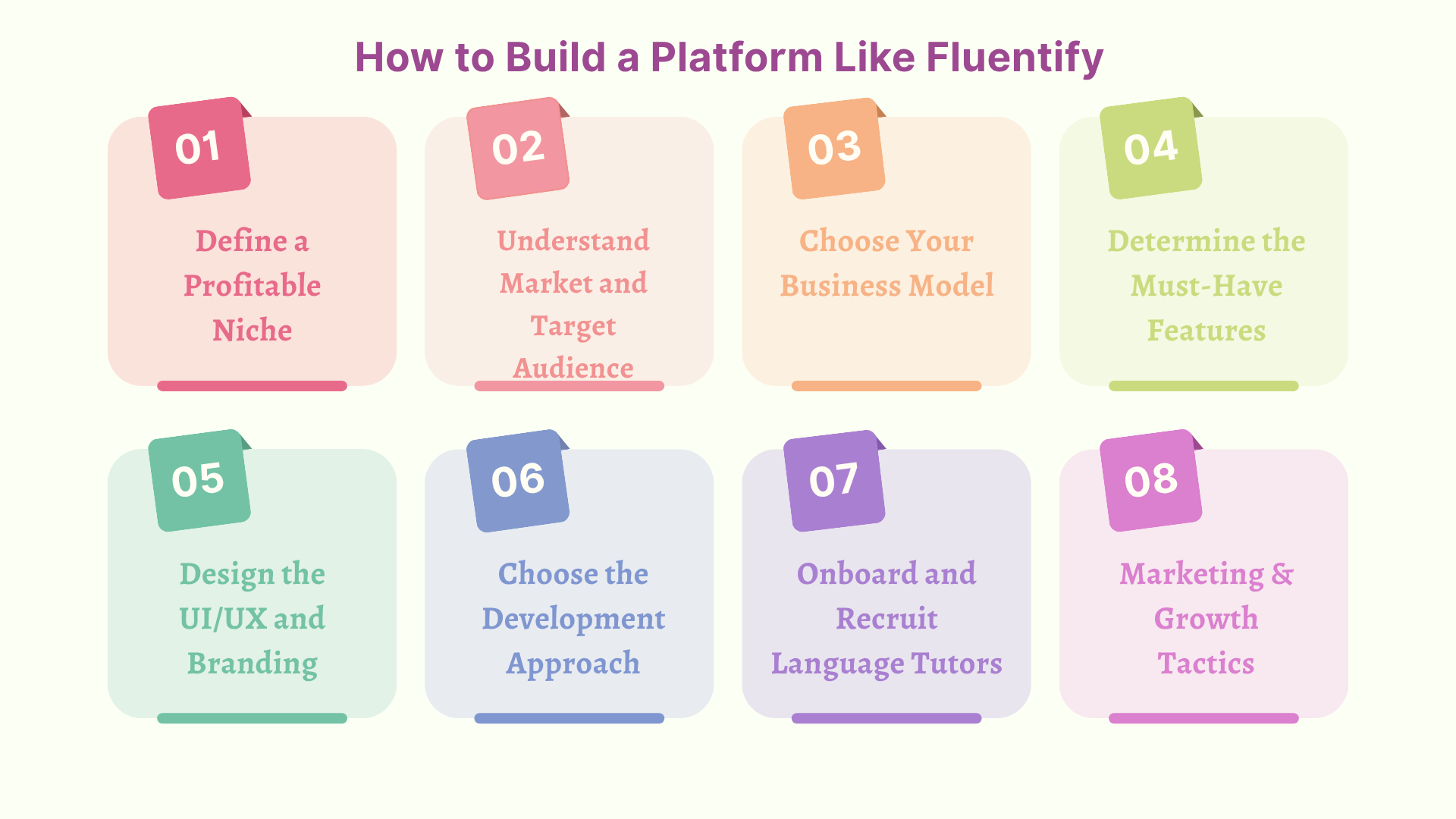
Step # 1: Define a Profitable Niche
First and foremost, find a solid niche for your online tutoring platform. Whether you’re new to the tutoring industry landscape or a language expert, finding the right niche is crucial for the next steps you take!
Moreover, niching down offers you a competitive edge, attracts the right students and builds your authority. Fluentify offers language lessons for mainly English, Spanish, French, German, Italian, and Portuguese. The platform primarily caters to the language needs of professionals and corporate industries through personalized learning and packages.
How to find a niche for your language tutoring platform?
- Perform competitor analysis
Identify the top 2-3 successful language tutoring platforms and study their strengths and shortcomings. Analyze their tutoring languages, business models, revenue streams, price, target audience, etc. Find gaps in their service offerings and turn them into your platform’s USP. For instance, Verbling, Italki, and Preply are key players in the language tutoring space.
- Analyze market demand
Before settling on a niche, ensure it has significant demand. Look into what learners are actually searching. Use tools like Google Keyword Planner, Semrush, and Ahrefs to find high-volume keywords. For example, “Business English for Tech Professionals” has a high search volume; you’ve got your niche there.
- Tap into geographic & cultural trends.
Regional niches & country-specific trends demonstrate high growth potential. For example, English tutors have a higher demand in Asia, the Middle East, Latin America, and Europe.
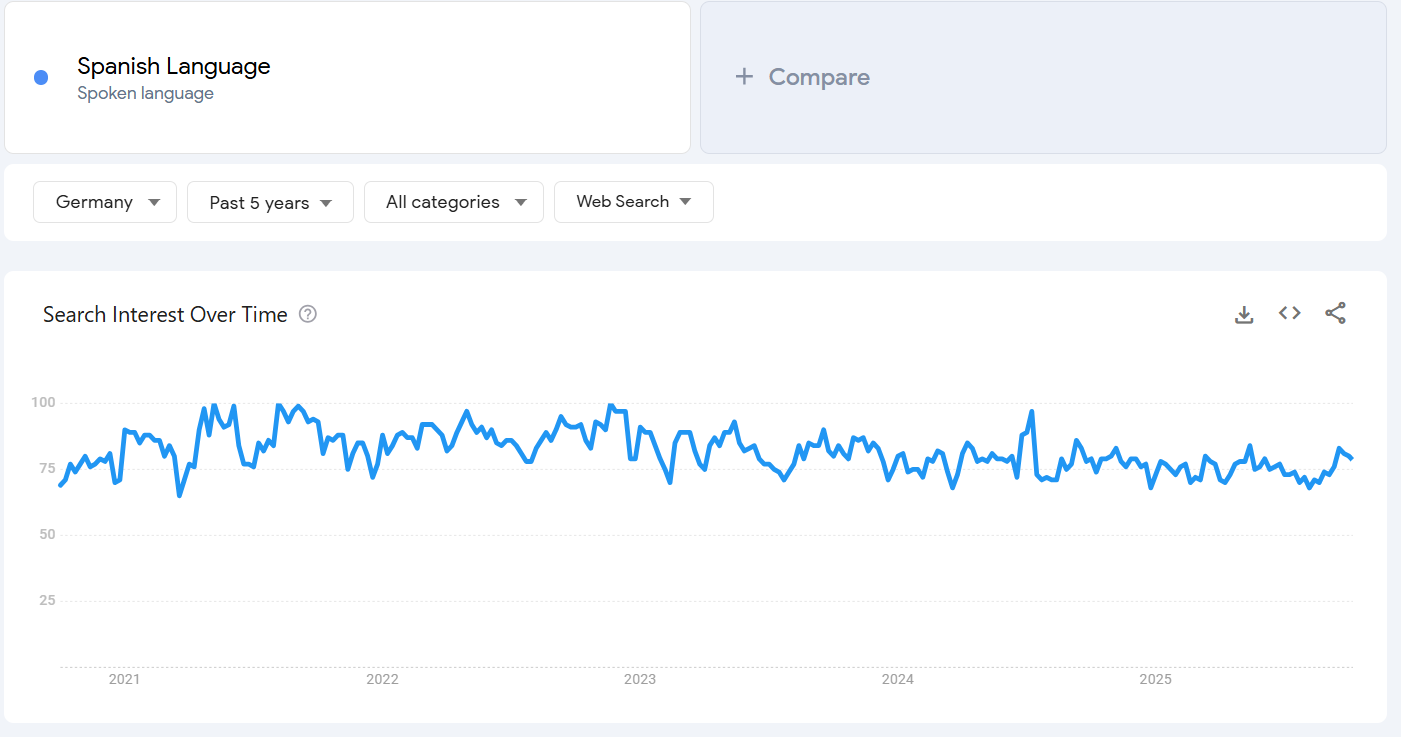
- Surveys & Communities
Participate in subreddits like r/Languagelearning, r/language_exchange, Facebook or LinkedIn groups. Observe discussions, popular queries and questions. This could help you discover underserved niches.
Profitable Niches Ideas for Language Tutoring Platform:
- 1-on-1 and group language lessons for high school students
- Private tutoring and packages for corporate professionals
- Test & certificate preparation related to language proficiency
- AI-Enhanced language learning tutoring platform
- Gamified language learning focused on kids
💡 Tip: While most language learning businesses focus on breadth (many languages), you can edge ahead with depth (proficiency in a niche). Drawing on your strengths, experience, and problem-solving style contributes to finding your niche.
Step # 2: Understand Market and Target Audience
To build a successful language tutoring platform, a clear understanding of the market and target audience is essential. This makes it easier to market and attract the right learners!
Craft detailed buyer personas to delve into the detailed nuances of the audience. These personas should cover age, profession, interests, etc. Researching the target market helps to position your tutoring platform better.
Understanding the Language Tutoring Market
- Tutor Market & Supply – Certified teachers and native speakers with subject expertise are language tutors. Address tutor needs like competitive pay, smart scheduling, and a growing number of students.
- Emerging Technology Trends – AI-powered matching, micro-learning, and gamified learning modules are growing trends.
- Popular Languages & Opportunities – English, Spanish, German, Mandarin Chinese and Japanese are popular languages. While English has widespread global demand, Spanish has precedence in the USA and European markets.
Key Questions to Understand the Target Audience
- What’s the age group of your ideal learner? What’s their first and second language?
- Are they high school learners, kids, university students and professionals?
- What is their job and income level?
- What are their primary & secondary goals for learning a language?
- Do they prefer 1:1 or group tutoring?
- What are the key challenges while learning the language?
Step # 3: Choose Your Business Model & Revenue Streams
While you have the most profitable niche and a deep knowledge of your target audience, the right business model favours long-term success. After all, it’s how your platform makes money.
So, which is the best business model for your platform?
Well, that depends on your target audience, platform goals and operational costs.
Fluentify adopts a hybrid model, earning from both commissions and enterprise packages. The platform offers pay-to-pay sessions and subscription packages for individual learners. For corporate clients, it provides custom training programs and academy-style learning. The prices are often based on the team size or on a per-seat basis.
Key Business Models for Language Tutoring Platforms:
- Pay-per-session
Students can book hourly sessions for a specific language with their preferred tutors. As a platform, you can take a commission for each completed lesson. Fluentify charges a 20% – 25% commission
- Subscription Plans
Once students find the right tutors with trial sessions, they can upgrade to weekly or monthly plans. This provides recurring revenue and a better learning experience for students. For example, Fluentify offers 3, 10, and 25 session packages at varying costs with each session spanning 30-minutes.
- Corporate Partnerships
This is a lucrative segment for language learning platforms. Partner with popular corporate clients and offer structured enterprise packages. You could offer one-to-one training and blend it with 360-degree learning courses.
- Academy
Collaborate with content partners to offer industry-focused courses. Fluentify has partnered with Voxy to offer academy-style courses across industries.
- Upsells
Additionally, businesses can earn from featured listings, certification, and custom lesson plans.
Step # 4: Determine the Must-Have Features & Functionalities
Building a full-fledged language tutoring platform involves everything from onboarding to monetization.
Here are essential features to create a website like Fluentify:
Key Learner Features
- Registration & Login
Students can create their profile using email or social login. Include Google, Facebook, and LinkedIn sign-ups for a seamless and frictionless login. For a more personalized learning experience, ask learners questions about their learning goals, proficiency levels, preferred tutoring mode, etc.
- Search & Tutor Discovery
An effortless search and discovery tool helps to explore and find the right tutors. Include filters and categories, such as subjects, price per lesson, preferred slot, or specific keywords. Advanced options include specialties, native and English speakers.
- Lesson Scheduling & Cancellation
Once learners choose a tutor, they can book a trial session based on the tutor’s availability. Allow learners to choose from 1-on-1 or group tutoring sessions. Some platforms even allow students to send personalized messages to connect with tutors. Provide easy rescheduling or cancellation to avoid delays or no-show scenarios.
- Payment
Provide multiple payment options, such as Stripe, PayPal, Apple Pay, major cards or digital wallets. Ensure a simple and secure payment process to reduce drop-offs.
- Live Lessons
Offer built-in video integrations with Zoom, Agora or Lessonspace. Include high-quality video/audio, in-chat, and screen sharing to build an interactive classroom environment.
- Academy
To blend in interactivity and comprehensive learning features, an extensive course library is available on your platform. Include grammar, fluency, and pronunciation classes to boost language skills.
- Whiteboard
Online whiteboards help with explaining concepts. This includes grammar, interactive exercises, and vocabulary lessons.
- Ratings & Tutor Feedback
Allow students to provide tutor feedback and ratings for completed sessions. This helps tutors to build credibility and helps students to decide the right tutors.
Key Tutor Features
- Login & Profile Management
Define an easy onboarding and profile setup process for tutors. Allow tutors to add essential details, detailed bio, introductory demo videos, pricing, testimonials, etc.
- Lesson Management & Scheduling
An integrated calendar management allows tutors to schedule, view and manage classes. Provide additional options to fix time slots, display appointments, or show recurring events.
- Tutor Dashboards
An advanced tutor dashboard offers insights on earnings, commissions, learner progress, sessions completed, and more.
- Initiate Payouts
Tutors often prioritize consistent and timely payouts. Define a structured system, where the payouts are credited on a bi-weekly, weekly, or monthly basis. Wise, PayPal, Skrill, and Payoneer are the top withdrawal methods.
Key Admin Features
- Tutor Management
Admin can add, approve, and manage tutor accounts. Track their sessions completed, payouts, manage profiles, and even bookings.
- Lesson Management
Provide centralized management for admins to view and manage all the sessions. This also involves frequent checks to prevent conflicts, double bookings, course approvals, etc.
- Student Management
Admin can add, update and manage student accounts. Keep a track of active and inactive students, solve grievances and queries.
- Payment Management
Provide in-built payment integration with gateways like Stripe, PayPal, etc. This way, you can ensure easy and secure inflows for platform transactions. Include cards, wallets, local payment methods, etc, based on the audience’s preferences.
- Analytics & Reporting
Detailed business analytics helps to keep a bird’s-eye view of your business performance. This includes reports on revenue, commissions, student progress tracking, etc.
- Platform Settings
Third-party integrations and branding are crucial for scaling your tutoring business. Provide interface and options for payment integrations, email marketing, video conferencing tools, and visual appearance.
Step # 5: Design the UI/UX and Branding
An engaging language learning experience needs an adequate balance of top-notch features and a well-blended learning path. After all, a great design makes mundane language lessons exciting!
Your platform design depends on your target audience. For instance, a language tutoring platform for kids needs a more gamified UX with badges, leaderboards, challenges, and progress bars.
Your design journey might be something like:
Personas-> Storyboards -> Mapping User Journey ->Design UI Prototype & Wireframes -> Final Product.
Key Aspects of a Compelling Language Tutoring Platform:
- Clean navigation flows with key interactions
- Easy search for tutor-student matching
- Simplistic interactions from booking to payment and learning
- Intuitive screen layouts with effective CTAs
- Color palette, typography, and style
- Gamification design with badges, points, streaks, and milestones
- Dashboards with key statistics and learner progress reports
Step # 6: Choose the Right Development Approach
Choosing the right development platform for your tutoring business is a crucial step. You need to consider your business goals and pick the right solution.
Before the development process, ask a few key questions to make the process seamless:
- What are the core features and functionalities you’re planning for your tutoring platform?
- Does this solution meet your technical requirements?
- Does this solution offer a user-friendly and intuitive design experience?
- Is it possible to easily integrate the solution with other integrations (video conferencing, payment gateway, or analytics)?
- Is there a robust technical support team?
- Can you scale this solution in the future?
- What is your development budget?
Research different development solutions and evaluate whether they offer features that fit your business needs. Video conferencing support, payment gateway, dashboard & analytics, and lesson management & scheduling are key features you need to look for.
For instance, if you’re planning for an innovative platform, consider AI-tutor matching, visual progress bars, etc. Or, if you need a branded website, choose a Fluentify clone script with 100% open-source access like Pinlearn.
Step # 7: Onboard and Recruit Language Tutors
Now you have set the foundation for your language tutoring platform. It’s about time you built a dynamic powerhouse of talent for a great language learning experience.
Popular language platforms like Fluentify, Preply, and Cambly prefer native-speaking tutors with subject expertise. If you’re planning to work with corporate clients, hire professional tutors with high-level expertise. A streamlined recruitment process attracts the right tutors to your platform.
Onboarding & Recruitment Strategies:
- List the essential degree, teaching experience or accreditation, like a TEFL certificate.
- Advertise on the right channels, including your website.
- Create a simple registration and submission process (registration & filling form, equipment testing, 2-minute introductory video)
- Define clear guidelines for submission for fair selection.
- Reviewing & screening process for candidates meeting criteria
- Approval & onboarding process for selected candidates
- Profile setup and ongoing support with newsletters, workshops and resources
Step # 8: Marketing & Growth Tactics
Now you have built a solid foundation for your tutoring platform – niche, business model, offering, and right platform. It’s time to market your platform to stay ahead in the fierce competition. Before we dive into effective promotional tactics, consider the needs and preferences of your audience.
Key Marketing Strategies:
- Content marketing
Create a dynamic content hub with blog posts and case studies to intrigue your audience. When you educate them with valuable insights and solutions, they are more likely to join your platform. A few other content ideas include tutorials, how-to videos, newsletters, etc.
- Social media marketing
Build a gripping social media presence on Instagram, TikTok or LinkedIn. You can add bite-sized lessons on stories and reels. Share grammar or vocabulary tips on carousels or posts.
- Referral program
Create a referral program where new students can join your platform using the referral link shared by existing students. Provide attractive incentives to both parties. For example, Preply offers a 70% discount for the first trial lesson to the referred and $50 Preply credits (for future purchases) to the referer.
- Affiliate marketing
Use affiliate programs to spread your marketing efforts beyond existing students. So, anyone with a potential network of audience (family & friends) can bring in new signups and earn commissions.
- Paid advertising
Target the right target audience with paid campaigns. Google Display, YouTube Ads, and Meta ads are strategic places to attract high-value learners.
- Search engine optimization
Focus on high-volume keywords to direct traffic to your website. For instance, you could include “best tutoring services”, “math tutor”, or “SAT tutoring.”
- Discounted bundles
Offer two or three lesson bundles at a discounted rate to existing students. You can even offer them bigger bundles for six months at a significantly lower price (four months).
Wrapping Up
Building an online corporate language learning platform like Fluentify is a great leap as an entrepreneurial pursuit. We hope our guide on how to build a platform like Fluentify helps you with successful implementation. Want to launch your platform in weeks? Get a free consultation call and a customized plan for building your tutoring platform today!
FAQ-Related to How to Build a Platform Like Fluentify
1. How to build a platform like Fluentify?
These are the key steps to create a platform like Fluentify:
- Define a profitable niche
- Understand the market and the target audience
- Choose your business model & key revenue streams
- Determine the key & advanced features
- Design the UI/UX and Branding
- Pick the right development approach
- Onboard and recruit language tutors
- Promote and scale your language tutoring platform
2. What is the recommended tech stack for Fluentify?
Here’s the recommended tech stack for Fluentify:
- Front-end – React.js, Next.js,
- Back-end – Node.js, Ruby on Rails
- Database – PostgreSQL, MongoDB,
- Video Integration – Agora, Zoom, Twilio
- Mobile frameworks – Flutter, React Native
3. How long does it take to develop an online tutoring platform like Fluentify?
To build a Fluentify-like tutoring platform, it takes around 6-8 months. And the development time depends on project complexity, tech stack, hourly developer rate, etc.
